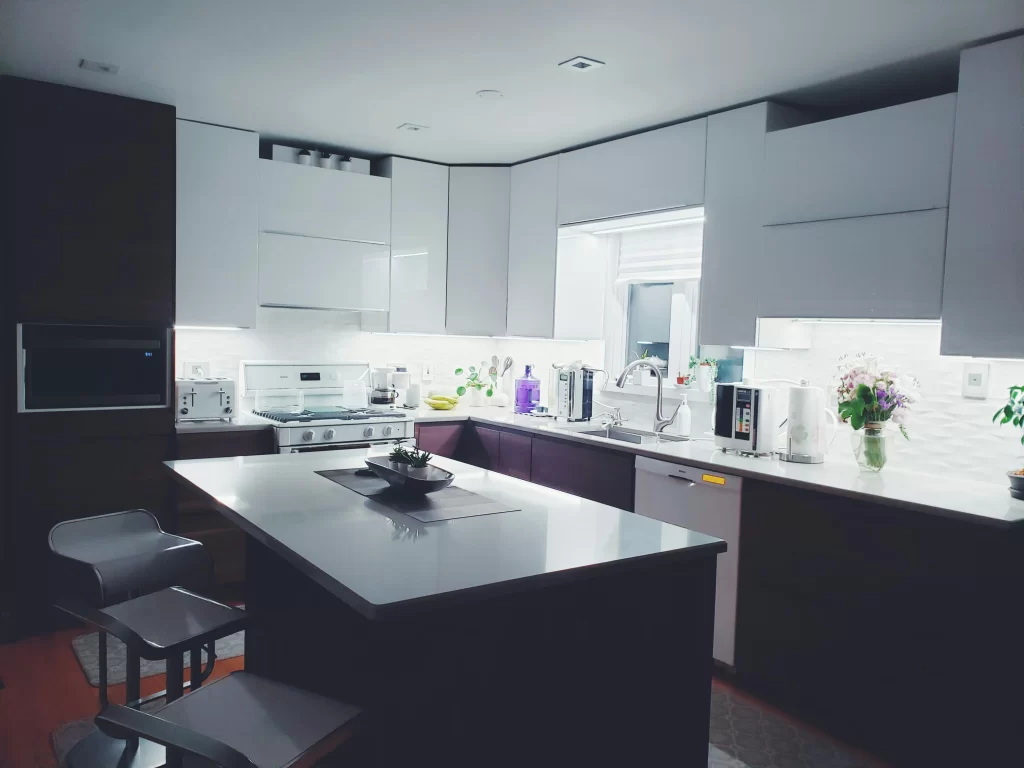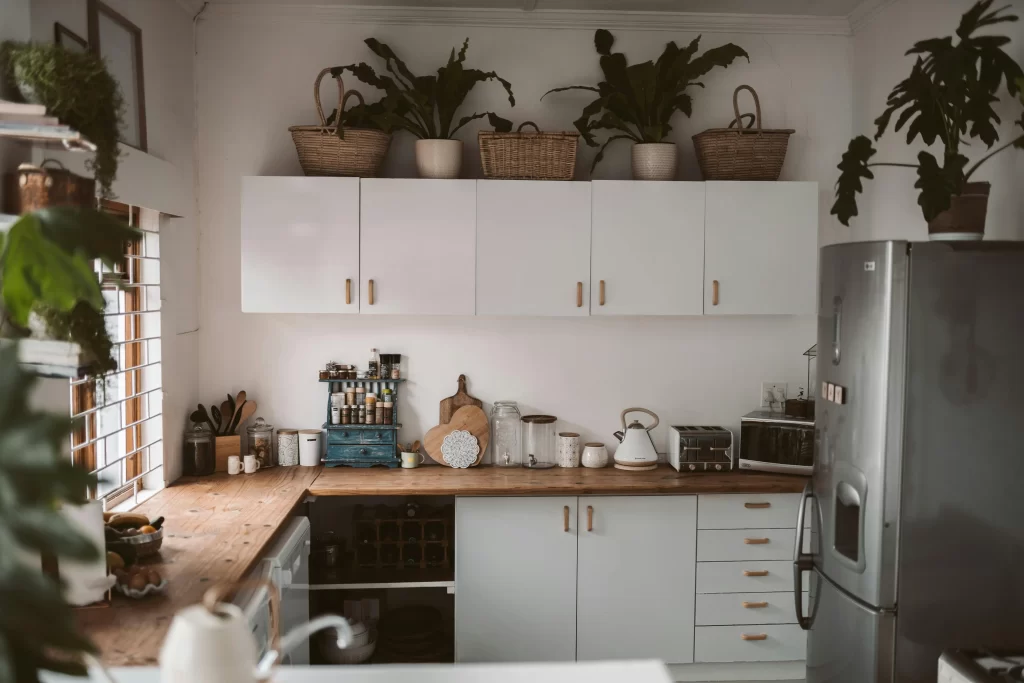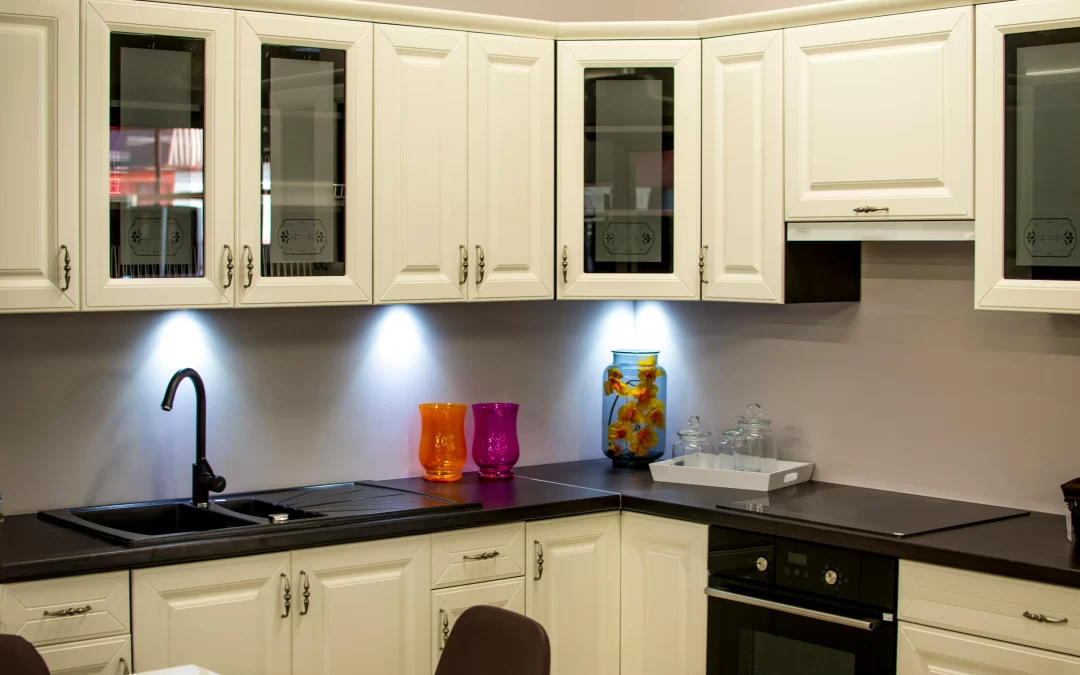So, you’ve decided it’s time to spruce up your home by upgrading your kitchen, and what better way to transform the heart of your home than by giving your cabinets a fresh, new look? Whether you want to modernize your space or add a splash of color, prep your kitchen cabinets and embark on this DIY journey to paint your kitchen cabinets. Not only is it a cost-effective way to revitalize your kitchen, but it also allows you to unleash your creativity. Before you dive in, let’s walk through the process step by step, ensuring your cabinets end up looking professionally painted.
Materials Needed
Before you get your hands dirty, let’s gather the essential materials for this project:
- Paint and primer selection: Choose high-quality paint and primer for cabinets and trim work. These products are formulated to withstand the wear and tear of daily kitchen use.
- Sandpaper and sanding block: To ensure even sanding on flat surfaces, you’ll need different sandpaper grits, varying from coarse to fine, and sanding blocks.
- Paintbrushes and rollers: A good-quality angled brush will help you reach tight corners and crevices, while a small foam roller will make painting flat surfaces a breeze.
- Painter’s tape: This product helps you achieve crisp, clean lines and protects areas you don’t want to paint.
- Drop cloths or plastic sheeting: Use these simple materials to protect your surrounding areas from drips and splatters.
- Screwdriver or drill: If you plan to remove your cabinet doors, keeping one of these items within reach will make the process much easier.
- Safety gear: Don’t overlook this crucial material! Your well-being is as important as achieving a beautiful, long-lasting finish on your cabinets. Protect yourself with gloves, goggles, and a respirator mask.
How To Prep Your Kitchen Cabinets
When painting your kitchen cabinets, good preparation is essential for a flawless, long-lasting finish. Follow these steps to make sure your cabinets are ready for their makeover:

- Clear countertops and workspaces: Begin by clearing countertops and workspaces, providing ample room to maneuver during the painting process. Doing so will make the process smoother and avoid accidental spills or splatters.
- Remove cabinet hardware and doors: Unscrew and remove all cabinet hardware, such as hinges, knobs, and handles. Then, carefully remove the cabinet doors and set them aside.
- Label doors and hinges: Label each door and its corresponding hinge with a numbering or lettering system. While it might appear unnecessary, labeling your cabinet doors properly and hinges can save you tremendous frustration later on.
- Clean and degreasing surfaces: Use a degreasing cleaner to remove any built-up grease, grime, or residue from the cabinet surfaces. This step is vital to ensure the paint adheres correctly.
- Protect floors and appliances: Before you roll up your sleeves and paint your kitchen cabinets, cover nearby appliances, floors, and walls with plastic sheets or drop cloths to catch drips or splatters.
How To Paint Your Kitchen Cabinets

Now that your cabinets are prepped and ready, it’s time to start painting! Here’s how to paint your kitchen cabinets for a professional-looking finish:
1. Sand the Surfaces
Before you unleash your inner Picasso, it’s time to prepare the canvas by sanding the surfaces of your cabinets. Sanding is pivotal in achieving a smooth finish, removing imperfections, and providing a better grip for the primer and paint. Using medium-grit sandpaper, gently roughen the surfaces, paying extra attention to any existing finishes or glossy surfaces. Once the sanding is complete, thoroughly clean the surfaces to remove dust and debris. Remember, a clean canvas sets the stage for a flawless masterpiece.
2. Apply Primer
With your cabinets now sanded and cleaned, it’s time to apply the primer. Primer is a crucial foundation, ensuring the paint adheres well and providing a uniform surface for a professional finish. Use a high-quality primer suitable for your cabinet material, applying it evenly with a brush or roller. Be patient and let the primer dry thoroughly before progressing to the next step. This process ensures optimal adhesion and contributes to the longevity of your painted cabinets.
3. Paint Your Cabinets
Now comes the fun part – paint your kitchen cabinets. Employ a combination of paintbrushes and rollers to achieve a smooth and even application. Use an angled brush and apply the paint in thin, even strokes for intricate details, crevices, and hard-to-reach areas. Work in the direction of the wood grain and maintain a wet edge to prevent the formation of lap marks. Use a small foam roller for flat surfaces, such as cabinet doors and drawer fronts. Apply the paint evenly in a thin coat, working in sections and maintaining a wet edge as you go. Applying several thin layers instead of a single thick coat is better for better control and a more professional result.
And here’s a pro tip: stay up-to-date on the latest trends with our tips on the best interior colors for 2024.
4. Reassemble And Hardware Installation
As your painted cabinets dry to perfection, it’s time to reassemble them. Carefully reattach the doors, ensuring proper alignment and adjustment of hinges as needed. Let the paint fully cure as per the instructions provided by the manufacturer before reinstalling any hardware or knobs. This step will prevent dents or damage to the fresh paint. Patience is key, and rushing this step can compromise the overall aesthetic.
5. Add Finishing Touches And Clean Up
Congratulations, you’ve successfully transformed your kitchen cabinets! However, the journey isn’t quite over yet. It’s time to add those final touches that elevate your cabinets to a professional standard. Inspect the painted surfaces for any necessary touch-ups or corrections, addressing them promptly. Once satisfied, it’s time to clean up. Rinse your brushes and tools thoroughly, following proper disposal procedures for any leftover paint materials. By taking these extra steps, you maintain the longevity of your tools and contribute to a more sustainable and eco-friendly home renovation project.
End Note
In conclusion, prep and paint your kitchen cabinets is a fulfilling DIY project that can breathe new life into your kitchen space. Embrace the creative process, experiment with colors, and enjoy the transformation. Remember, success depends on careful preparation, quality materials, and a patient approach.
If you’re looking for reliable hardware and tools for your cabinet makeover, feel free to visit Johnson’s Hardware, where our knowledgeable staff will be happy to assist you in making your kitchen renovation a success!


Recent Comments